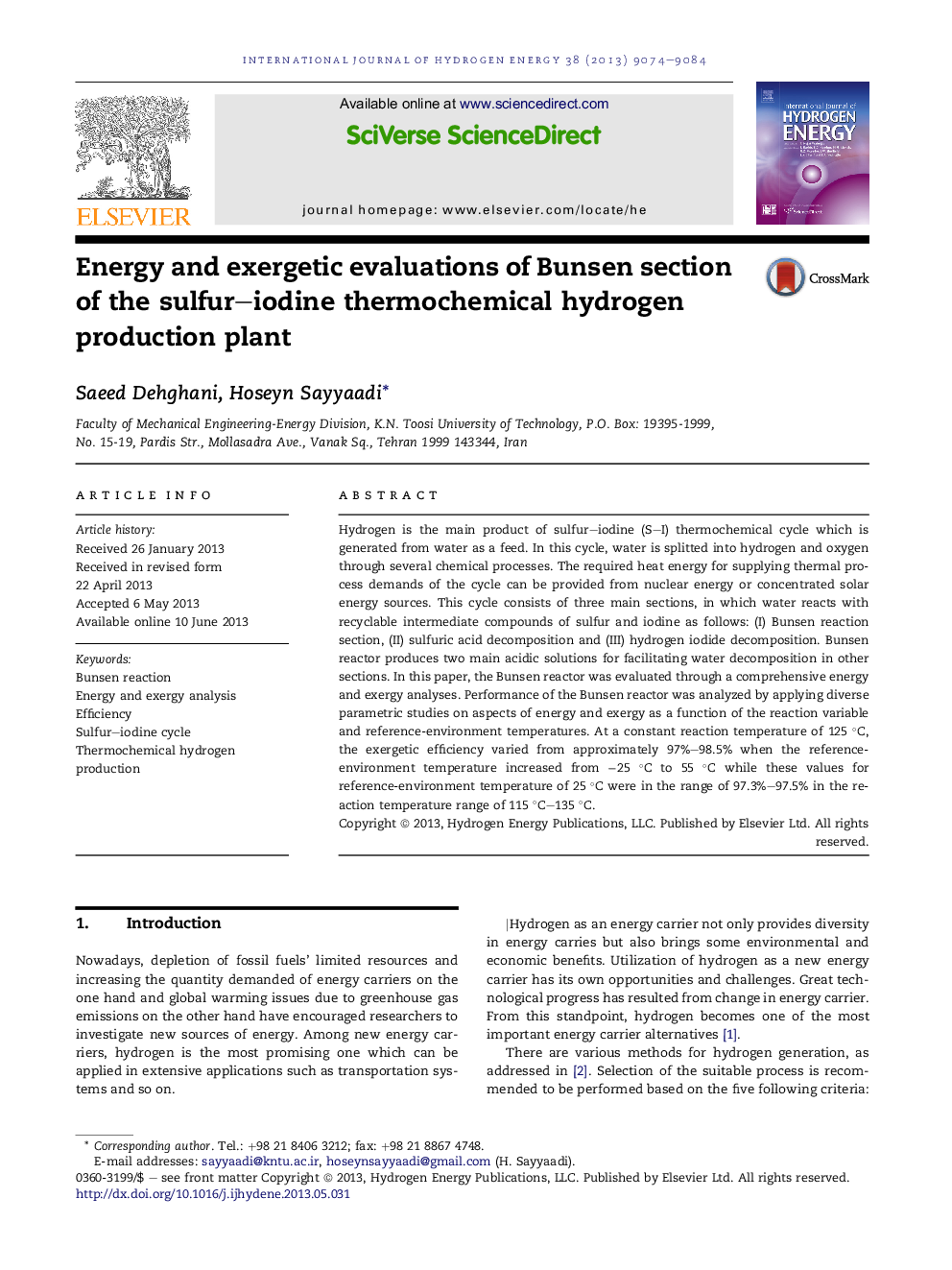| Article ID | Journal | Published Year | Pages | File Type |
|---|---|---|---|---|
| 7722245 | International Journal of Hydrogen Energy | 2013 | 11 Pages |
Abstract
Hydrogen is the main product of sulfur-iodine (S-I) thermochemical cycle which is generated from water as a feed. In this cycle, water is splitted into hydrogen and oxygen through several chemical processes. The required heat energy for supplying thermal process demands of the cycle can be provided from nuclear energy or concentrated solar energy sources. This cycle consists of three main sections, in which water reacts with recyclable intermediate compounds of sulfur and iodine as follows: (I) Bunsen reaction section, (II) sulfuric acid decomposition and (III) hydrogen iodide decomposition. Bunsen reactor produces two main acidic solutions for facilitating water decomposition in other sections. In this paper, the Bunsen reactor was evaluated through a comprehensive energy and exergy analyses. Performance of the Bunsen reactor was analyzed by applying diverse parametric studies on aspects of energy and exergy as a function of the reaction variable and reference-environment temperatures. At a constant reaction temperature of 125 °C, the exergetic efficiency varied from approximately 97%-98.5% when the reference-environment temperature increased from â25 °C to 55 °C while these values for reference-environment temperature of 25 °C were in the range of 97.3%-97.5% in the reaction temperature range of 115 °C-135 °C.
Keywords
Related Topics
Physical Sciences and Engineering
Chemistry
Electrochemistry
Authors
Saeed Dehghani, Hoseyn Sayyaadi,
